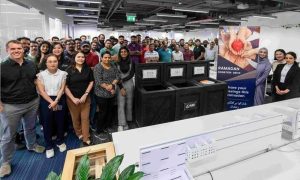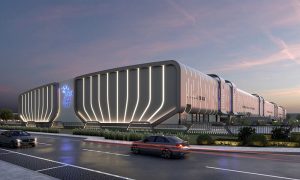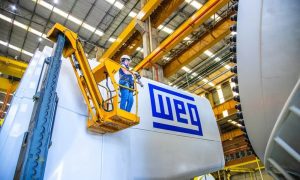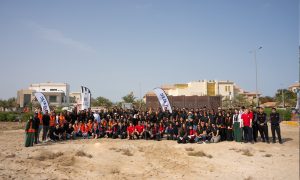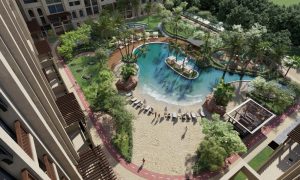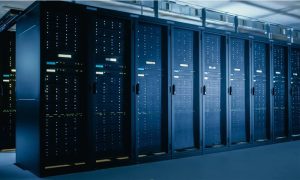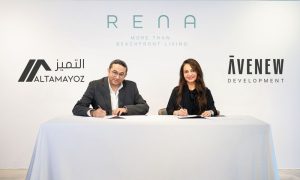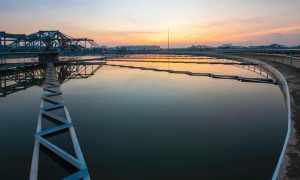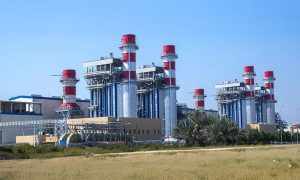Diverse Dammam
Renowned for industry and oil, Dammam’s tourism potential is often overlooked. Melanie Mingas discovers how the combination of a low-rise cityscape and a breathtaking landscape is transforming the Eastern Province

As Saudi Arabia’s industrial base, Dammam is home to the main seaport of the Persian Gulf and some of the largest oil and gas reserves in the world.
It is oil and its related industries that have facilitated Dammam’s growth from a small fishing town of 2000 inhabitants to a city sprawling 710,000km2, home to nearly four million residents.
Today, Dammam reaches beyond its city limits to encompass Al Khobar and Al Dhahran, creating a single district powered by commerce and industry, under the jurisdiction of a single municipality.
Since the discovery of the first oil field in the 1930s, social and economic development has largely been shaped by the operations of the Arab American Oil Company (ARAMCO), from its headquarters in Dhahran.
From building new houses to converting old houses into schools, employing residents and offering construction opportunities for new, small and established companies, the organisation’s continued interests will next see investment being ploughed into roads, bridges and building the first high-rise towers in Saudi Arabia’s flattest city.
By and large, private investment is overseen by a network of government bodies, each tasked with ensuring that those looking to establish interests in the city have the right vision for Dammam’s future.
[facts]
Education Investments
$36.7b
The funds allocated to build 1100 new schools and colleges
[/facts]
One of the planned initiatives to further enhance the relationship between public and private interests is a series of internet portals which will become a “one-stop-shop” for direct communication between prospective private investors, contractors and developers, and these various state entities.
It will use the same model as other “e-government” services, which currently allow the public to communicate with the authorities.
“The purpose is to communicate with the world and with national areas for services and other requirements, but we are hoping for it to become even more effective than this. This will be the gate to becoming part of Saudi Arabia,” says Sameer Al-Gusaiyer, who is director of investments for the Eastern Province Municipality.
Speaking about two key projects; King Abdullah Civic Centre and a one million m2 mixed-use development with the working name Amanah, Al-Gusaiyer adds: “There are some future projects in the private sector that will change life here within five or six years. We will see another jump in business investment and opportunity.
The plan is to have all of these projects shared with the private sector ”
“The plan is to have all of these projects shared with the private sector and have a committee outside of the government to handle and manage these investments.”
Growing industry
The primary industries in Dammam are oil, manufacturing and shipping, with activity concentrated in industrial zones away from residential and recreational developments.
The significance of the zones is outlined in the National Industrial Development Strategy, a blueprint for economic diversity on a national and international scale.
North of Dammam, Jubail Industrial City (JIC) is the largest industrial complex in the world. Previously famed for pearling, Jubail now houses oil refineries, petrochemical and fertiliser plants, steel works, a port and navy base, and the world’s largest seawater desalination plant, which provides half the country’s drinking water.
Now known as Jubail One, development continues and the final phase of Jubail Two is scheduled for completion in 2015, with the bulk of investment expected to be foreign direct investment (FDI).
Bidding was extended to mid-December for the Kingdom’s largest gas plant, to be built by Saudi ARAMCO in Al Khobar. Upon completion, due in 2013, the Wasit plant will be capable of processing 2.5 billion ft3 of gas per day, using sources from the Arabiyah and Hasbah offshore sour gas fields.
The financial crisis and liquidity had an impact on the rate of investment and other developments, but Dammam is still a secure place”
Construction will be divided into four parts: a gas unit, cogeneration power plant, sulphur- recovery unit and natural-gas liquids fractionation facilities. Reports estimate the budget will be between US $6 billion and $8 billion.
Investment body Modon signed agreements this year to provide electricity for a number of industrial cities, including in Dammam, and the firm is also looking to improve infrastructure in these areas.
The final piece in the jigsaw is the region’s railway projects.
KSA’s three-phase share of the GCC-wide rail network is valued at $25 billion and will connect Jeddah to Dammam; Mecca to Medina via Jeddah and Riyadh to Jubail.
[facts]
Housing Funds
$180b
The amount invested into building 6.9 million housing units by 2020
[/facts]
According to signal provider Siemens, the lines will feature the most up-to-date signalling and telecommunications equipment you can find in the world.
In addition, the $10 billion Saudi Landbridge project will boost vital trade throughout the country and between it and other gulf states.
It will be the first rail link between the Red Sea and the Gulf, linking Jeddah Islamic Port and King Abdullah Aziz International Airport with the Makkah-Madinah and Dammam railway lines.
Destination Dammam
In a complete paradox, Dammam’s second industry is tourism, and making the most of the area’s geography and heritage are a number of waterfront developments, recreational spaces and cultural buildings.
Unlike the religious tourism seen in other provinces, Dammam’s reputation as a holiday destination is purely about relaxation and culture, extending to the country’s largely expatriate population.
Developers in Dammam, the Eastern Province, need to move towards housing for the middle class to address the areas of real demand”
Among the developments is the King Abdullah Civic Centre at the Dammam Corniche. The leisure and culture attraction features an amphitheatre, museum, courtyards, promenades, event venues and harbour and waterfront vistas.
“Dammam’s beaches are beautiful and when people visit they feel alive; people come from Riyadh and Jeddah to work and holiday here and they move here too. There is a lot of work in offices, construction, shopping and hospitals,” says Al-Gusaiyer.
“The growth and popularity are due to the strength of the economy in the city. When you have a good economy, people want to work and invest there and growth occurs faster,” he adds.
There are a number of communities and tourist attractions currently under construction, with private development spearheaded by the likes of Emaar and Injaz.
[facts]
3.9%
Sector Growth
The level of real growth in the construction sector 2009
[/facts]
Emaar’s SAR 4.5 billion Khobar Lakes is a gated community of more than 2000 private villas, 11 mosques, childcare and healthcare facilities, schools, recreation clubs and a 113,000m2 retail centre.
The second of nine residential villages in the 4.3 million m2 development is currently under construction, with completion estimated for quarter one of 2011.
Complementing this vision is Al Marina, the “biggest project in the eastern province”, according to developer Injaz.
“It’s like a gated community but un-gated, a city within a city,” says the developer’s spokesperson Mohammed Rabih Itani.
Built around green spaces and community areas, the Al Marina project has been designed to honour and build on the cultural demands of the province. “The country is changing; there are more expats in the Eastern Province and you have local demand from nationals. Al Marina offers a way of life and community living which you don’t see in other projects here,” adds Itani.
“When the development was launched there were no other such developments in the Eastern Province, but developers need to move towards housing for the middle class to address the areas of real demand.”
Upon completion, the 3.3 million m2 development will include 636 villas, retail and recreational developments, schools and a mosque. But more controversially, it will contain mid- and high-rise towers; a mainstay for almost every other city, but certainly a new concept for the city of Dammam.
“Whatever happens in the Gulf States will happen in Dammam. For example, now it has- shopping malls like those in Dubai and Dharan. Where as usually the region builds horizontally, we will see them building upwards now,” Al-Gusaiyer predicts.
Public entities are overseeing three major developments, the King Abdullah Civic Centre, Half Moon Bay and Amanah. Ongoing work will see extended opportunities for commerce and tourism.
Future trends
Far from a trend follower, developments in the city are specifically targeted to its needs, with even state bodies requiring economic and environmental approval from other divisions.
It is an approach that has allowed Dammam to strike balance between its industries and the resulting income sources.
There are still issues; Dammam suffers the same endemic housing problems as the rest of the country; the delayed introduction of a mortgage law has deterred investment from developers and the government no longer holds the real estate interests it once did.
In October, it was announced that 2000 affordable and sustainable housing units would be built across 10 locations in the Eastern Province as part of the Prince Muhammad Bin Fahd Affordable Housing Project; 148 will be built in Dammam, contributing to phase one.
In addition to providing housing, the project will also bring education and employment opportunities; aimed at a sector of society which is often overlooked.
Investment in the area is increasing and purchasing power in Dammam is strengthening again, according to Itani.
“There were projects launched but you didn’t see any movement on the ground. If you look at the past, for every 10 projects launched, maybe only two would take place. This happened all over the Kingdom.
“The banks stopped lending, especially for real-estate development. The financial crisis and liquidity had an impact on the rate of investment and other developments, but Dammam is still a secure place,” Itani says.
Aiming high
Dammam’s future will be pegged on government investment, region-wide innovations in design and the commonly tried-and-tested industries that have powered its growth and success to date.
Urging the private sector to take the lead, Al-Gusaiyer asserts: “If you have a common goal between the public and private sectors, difficulties won’t exist. The private sector can move faster and when it makes the first move it will find the public bodies are working towards the same goals.”
Dammam Diary Dates
Show: ESTATEX
Organiser: Dhahran International Exhibitions Company (DIEC)
Sector: Real estate and housing
Date: December 14-18, 2010
Show: Buildex
Organiser: DIEC
Sector: Construction; building, interiors, landscaping and tools
Date: February 1–5, 2011
Show: Saudi International Water, Electricity and Power Generation Conference and Exhibition (WEPower)
Organiser: DIEC
Sector: Energy sources and production for engineers, investors, agents and distributors
Date: May 7-9 2011
Show: Ideal Home Exhibition
Organiser: DIEC
Sector: Interior design
Date: May 7-11 2011
